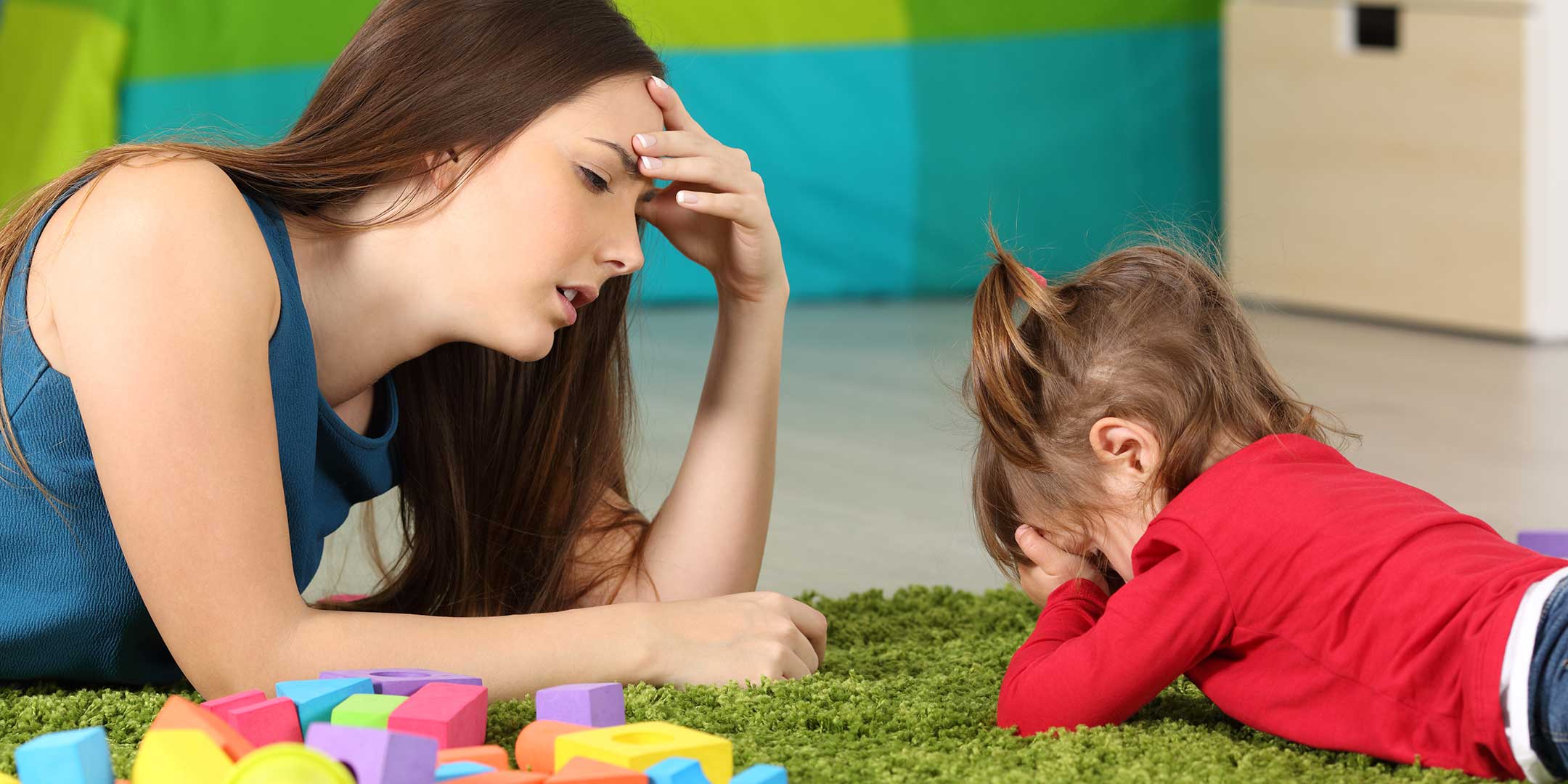“Mommy, Mommy!” shouts your child as you are trying to finish up a phone conversation.
“Wait just a moment,” you say in an agitated voice.
“NO mommy, really, look!” your child persists, tapping your shoulder 100 times.
At this point, you have retreated to the bathroom and have locked the door. As you walk out, you look over to see your preschooler pour out their cereal all over your newly cleaned floor.
What is your child trying to tell you?
A. “I’m trying to ruin your day!”
or
B. “Hey mom, I’ve missed you all day and really want to spend some time with you.”
When we’re feeling frustrated, we might respond A, but the answer is more likely B. To adequately address and transform misbehavior, we must first change how we perceive misbehavior and children who misbehave.
All Behavior Is a Form of Communication
Many times, we misinterpret what children are trying to tell us through their behaviors. We often punish them for their behaviors when they are really trying to tell us, “Help me learn a new skill.”
Instead of saying, “I feel sad when you are gone at work,” they might start arguing with you or pushing your buttons to get your attention.
Instead of saying, “I have had an overwhelming day at school today,” they might melt down in the grocery store over that elusive chocolate chip cookie. The more overwhelmed a person becomes, the more quickly the lower states of their brain are activated when unwanted behaviors occur.
Often, we are trying to stop all the behaviors rather than understand why they are occurring. If we can get to the root of the behavior, then true behavioral change can take place.
The Conscious Discipline Approach to Challenging Behaviors
Conscious Discipline helps parents look at these hard to handle times differently. It empowers you with the self-awareness, brain information, developmental knowledge and useable skills necessary to create safe, connected, problem-solving homes.
With self-awareness and an understanding of the relationship between brain states and behavior, parents can choose new tools to help their children learn valuable skills such as impulse control, problem-solving, empathy and composure.
Remember, all behaviors are a form of communication. Children have yet to learn the skills and language to understand their needs and then communicate them to us. They use behaviors to show us. It is our job as the adult to learn to hear them differently, so we can get different results.
Tips and Tricks for Everyday Situations
What do I do when my child hits their sibling?
Remember, it’s all about seeing behavior differently and teaching a new skill. Why did your child hit her sibling? Perhaps she wanted to get her sibling’s attention or wanted the toy her sibling was using.
To change this behavior, we must teach children what to do in this situation.
Try following this process:
- Acknowledge what your child wants. “You wanted (to play with that toy).”
- Communicate the limit. “You may not hit your brother. Hitting hurts.”
- Teach a new skill. “When you want a turn, tap your sibling and say please.”
Why are they always ignoring me?
The answer to this is: they are not. Most of the time children are engaged in learning, playing or even watching cartoons. We sit in the kitchen calling their names. By the third time, our voice level has risen, and we are feeling frustrated. Does this sound familiar?
If our children are engaged in what they are doing, it’s easy to block out the world. It’s our job to see this differently and get their attention differently. Eye contact shows that they are online with you and ready to listen.
Here are some tips to help you get eye contact:
Getting Their Attention
- Proximity – Get as close as you need to.
- Joint Attention – Show an interest in what they are engaged with.
- Tap them or use touch.
- When they look at you, then state what you want them to do.
You can also teach your children to get attention from one another differently. Tired of dealing with snatching and grabbing? Implement a “Tap and Say Please” policy. This can be accomplished with siblings who don’t have language by showing them the motions.
- Tap your sibling on the shoulder.
- Turn your hand over to show an open hand.
- Practice, Practice, Practice during playtime.
Children learn new skills best during playtime so that they can access the new tools they have practiced in similar situations.
I’ll leave you with the following quote by Dr. Becky Bailey, the creator of Conscious Discipline. It sums up what we at Conscious Discipline believe:
“Discipline is not something you do to children. It’s something you develop within them.” Embrace this mindset, and transformational change is possible.



